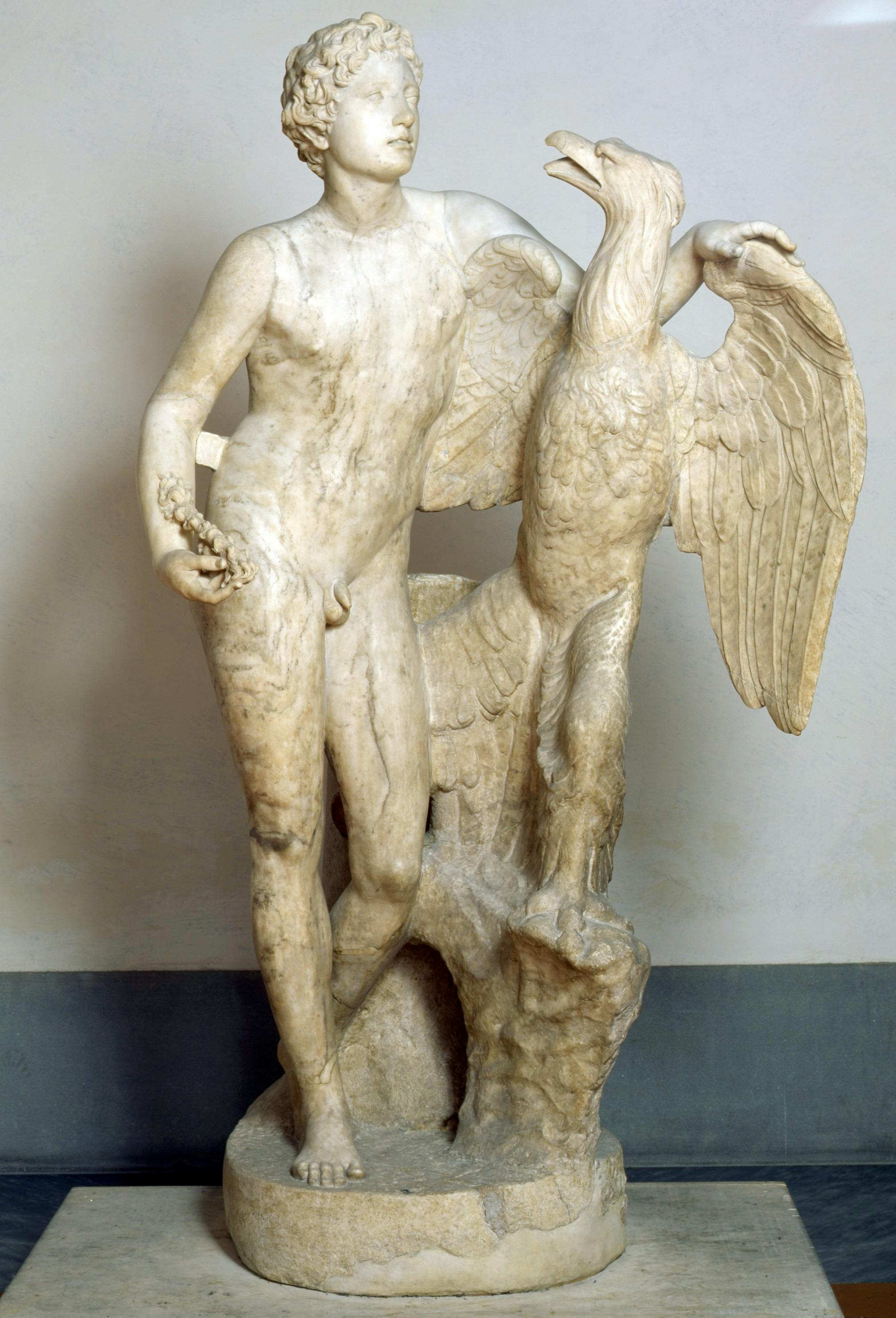Ganymede with the eagle
Roman art
The group depicts the young Trojan prince Ganymede in full nudity, flanked by Zeus in the form of an eagle, who has come to kidnap himthe boy and take him with him to Olympus, where he will obtain immortality by serving the gods as a cupbearer. Known since the 16th century, the work passed from the Capranica-Valle collection to the Villa Medici, where it remained until 1780, the year of its definitive transfer to Florence. On a sculptural level, the head and neck of Ganymede have certainly been integrated, as well as his shoulder, left arm and part of his right forearm, and again the tree trunk on which the young man leans, and the head and left wing of the eagle. The subject found great fortune in imperial Rome: Mansuelli has hypothesised its derivation from a work chronologically framed in the late Hellenistic period. It is, however, more probable to recognise in the Florentine statue and in other replicas of this model, such as one, also from the Antonine period, housed in the National Archaeological Museum in Naples, examples of re-elaborations from the Imperial age without a precise prototype in Greek art.
A. Romualdi (a cura di), Studi e restauri. I marmi antichi della Galleria degli Uffizi, II, Firenze, Polistampa, 2007 (con contributi di D. Manna, Ganimede con l’aquila. Il restauro, pp. 166-177); F. Paolucci, Gruppo di Ganimede con aquila, in “Mythologica et Erotica”, (rivedere le pp.); G. A. Mansuelli, Gallerie degli Uffizi. Le sculture, Vol. I, Roma, Istituto Poligrafico dello Stato, 1958, n°111, p.p. 142-143, e bibliografia precedente.
